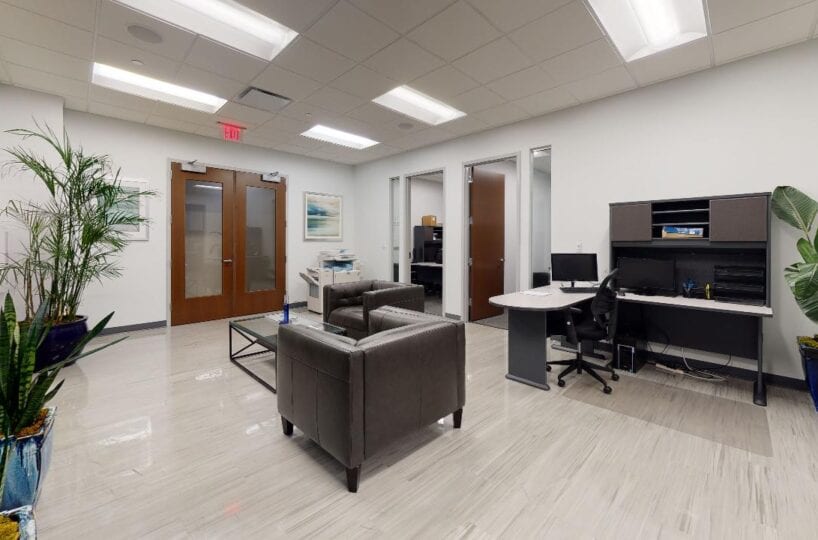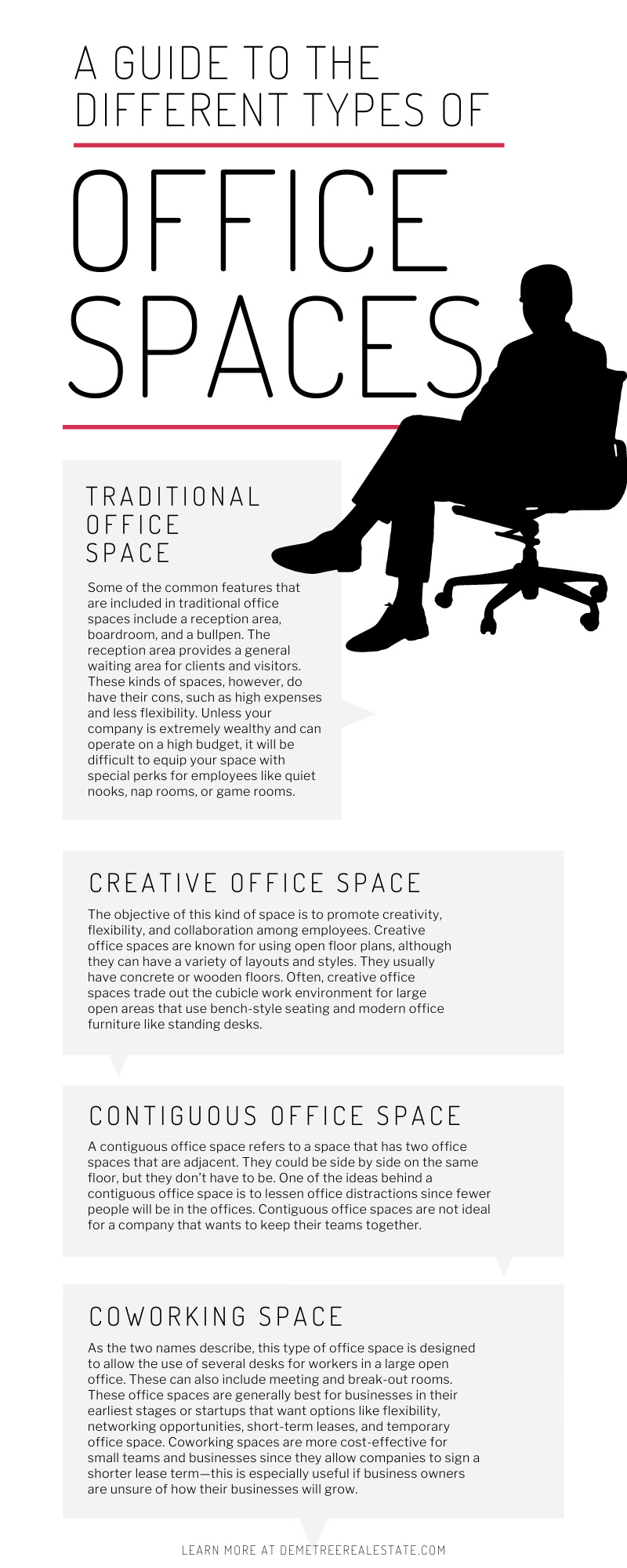 There are various options for office spaces that are available to many different types of businesses, and choosing the right office space is a huge process. There are many factors that need to be considered when going through this ordeal. And, ultimately, the type of space you choose will heavily impact your company’s long-term success. First, you will want to investigate all the different types of office spaces available. The sheer variety of these spaces exists because of the many different industries and niches that are in need of space to accommodate their company’s needs and requirements. Consider what kind of business you are trying to create. What are your goals? Where do you want this company to be in the future? These details are all going to matter in the type of office space you choose. Once you have everything about your business narrowed down, you must become familiar with the different office space options. These will have huge ranges in expenses, layout, and environment for your employees. To get you started on this journey, we present a guide to the different types of office spaces.
There are various options for office spaces that are available to many different types of businesses, and choosing the right office space is a huge process. There are many factors that need to be considered when going through this ordeal. And, ultimately, the type of space you choose will heavily impact your company’s long-term success. First, you will want to investigate all the different types of office spaces available. The sheer variety of these spaces exists because of the many different industries and niches that are in need of space to accommodate their company’s needs and requirements. Consider what kind of business you are trying to create. What are your goals? Where do you want this company to be in the future? These details are all going to matter in the type of office space you choose. Once you have everything about your business narrowed down, you must become familiar with the different office space options. These will have huge ranges in expenses, layout, and environment for your employees. To get you started on this journey, we present a guide to the different types of office spaces.
Traditional Office Space
Each kind of office space is best for specific industries. When looking into traditional office spaces, they’re usually most suitable for businesses like financial services, hedge funds, and law firms. Some of the common features that are included in traditional office spaces include a reception area, boardroom, and a bullpen. The reception area provides a general waiting area for clients and visitors. The bullpen provides the area for junior employees which will act as their workspace, while senior employees will generally have individual offices. The boardroom functions as a general large meeting room to discuss company matters. This type of layout is designed to give employees quiet, private areas for working independently and working with clients while handling confidential information. Traditional office space has its further benefits, especially when it comes to having a professional image. When you have this kind of space for the public to see, it gives the impression of a successful and stable business, which will go a long way in attracting and keeping clients. These kinds of spaces, however, do have their cons, such as high expenses and less flexibility. Unless your company is extremely wealthy and can operate on a high budget, it will be difficult to equip your space with special perks for employees like quiet nooks, nap rooms, or game rooms.
Creative Office Space
Technically, a creative office space is an office that operates outside of a traditional layout. The objective of this kind of space is to promote creativity, flexibility, and collaboration among employees. Creative office spaces are known for using open floor plans, although they can have a variety of layouts and styles. They usually have concrete or wooden floors. Often, creative office spaces trade out the cubicle work environment for large open areas that use bench-style seating and modern office furniture like standing desks. These spaces can also have features like an open kitchen, exposed ceiling, and upgraded lighting. Creative office spaces are supposed to offer more flexible layouts. This is so that the space can be used in different ways and turned into different things. Many creative office spaces have moveable walls. These can be expanded or contracted, making it possible to transform areas from team meeting areas and lounges into bar or happy hour areas. Creative office spaces are also meant to promote better employee health and wellness. These spaces can give feelings of comfort that make people enjoy being at the office. Creative spaces have more access to natural light since they are more open. Some architects have made advancements in designing spaces to combine indoor and outdoor space. They have chosen to use things like garage roll-up doors that can extend your office into an area like a patio, rooftop decks, or grass lawns fitted with seating and worktables.
Contiguous Office Space
A contiguous office space refers to a space that has two office spaces that are adjacent. They could be side by side on the same floor, but they don’t have to be. The spaces could be above and below, as well. The overall point is for them to be adjacent. Sometimes, these are referred to as suites and can be located on multiple floors of a building for single tenants to rent. This office option is usually for very particular needs. Businesses that may find this option useful are large ones looking to have different-sized offices in their building that are still near each other. One of the ideas behind a contiguous office space is to lessen office distractions since fewer people will be in the offices. Contiguous office spaces are not ideal for a company that wants to keep their teams together. They tend to create a certain level of separation between employees. If a company is concerned about this, they could investigate having a conference room that includes boardroom tables and a small office adjacent to it.
Coworking Space
A guide of the different types of office spaces would not be complete without looking at the option of coworking spaces, also sometimes known as flex office spaces. As the two names describe, this type of office space is designed to allow the use of several desks for workers in a large open office. These can also include meeting and break-out rooms. These office spaces are generally best for businesses in their earliest stages or startups that want options like flexibility, networking opportunities, short-term leases, and temporary office space. This can be extremely beneficial for those new to their industry looking to learn from experienced professionals. You have the opportunity to build professional relationships and network which will help your exposure grow and put your brand out there. Coworking spaces are more cost-effective for small teams and businesses since they allow companies to sign a shorter lease term—this is especially useful if business owners are unsure of how their businesses will grow.

